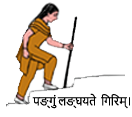The exact cause of back pain cannot be found in 85-90% of patients. Improper use of the spine frequently leads to back and low back pain. It is, therefore, mandatory to maintain proper posture while sitting and standing to avoid back pain. Heavy physical work, working and lifting weight while bending forwards, rotating your body, and working in vibrating circumstances (driving truck or auto-rickshaw) are some of the reasons that lead to back pain. Sciatica or pain from the low back to the leg occurs in 5-10% of patients back pain. The need for stopping due to leg pain and relief of pain on stopping (pseudo-claudication) is a feature of a worn-out intervertebral disc. Obesity, stress, depression, other psychological aberrations, work dissatisfaction or repetitive work, night duties, unemployment, low educational status, etc., are responsible for continuous back pain with inadequate response to standard management.
Rest is not the treatment of back pain. It is necessary to find out factors that lead to or increase back pain and change lifestyle accordingly. Strong willpower and endurance are also essential. One must remain active despite ongoing back pain. A prolonged leave from work is not recommended. Do not use painkillers for prolonged periods. Routine use of a brace for the low back is not recommended as it weakens back muscles after some time.
Exercise is an essential component of the management of back pain. Walking, swimming, cycling are good exercises for chronic back pain. Gardening is good too, but one must be careful while bending forwards. Fomentation is usually beneficial. Consult a physiotherapist for exercises in prolonged and unbearable back pain.
There are no special diet recommendations for back pain. However, weight control is desirable as a big belly pulls and strains your back. Regular aerobic exercise and Yoga help in the prevention of back pain.
Danger signals in Back Pain (Consult your doctor at the earliest)
- Recent severe injury
- Age: less than 20 years, more than 55 years
- Increasing pain, no relief with rest, no relief in any position
- Stiffness in the mornings, significant relief with anti-inflammatory pain killers.
- Nerve compression – tingling, numbness, and weakness of lower limbs, loss of control over urination
- Malaise, weight loss, fever
- Use of glucocorticoid (steroids) and anticoagulant (blood-thinners) drugs
- History of cancer
Fracture, inflammatory spondylitis, tuberculosis, osteoporosis, and cancer are some of the causes of nonresponsive back pain.
Back Exercises
See general instructions about exercise









Soorya-namaskar (Sun salutation), and Yoga postures such as bhujangasan, naukasan, pavanmuktasan, pashchimottanasan, vakrasan, ardhachkrasan, and veerasan help in relieving back pain.
